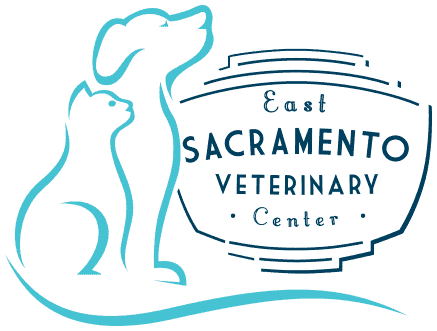Dog Anxiety: What Pet Owners Need to Know

We don’t always know what is going on inside of our pet’s brains, but we do know that they can experience a range of emotions and even suffer from some mental illnesses, similar to people.
East Sacramento Veterinary Center has experience treating many pets for problems like anxiety. We know that pet owners being able to recognize dog anxiety is an important part of us being able to help with dog anxiety and other behavioral issues.
Signs of Dog Anxiety
So what does dog anxiety look like anyways? It’s hard enough for people to verbalize their feelings about such things, let alone understand their dogs!
Pets suffering from anxiety often display telltale symptoms, though. These may include things like:
- Increased sleeping
- Loss of appetite
- Hiding
- Panting or drooling
- Fearful body language (tucked tail, ears back)
- Obsessive behaviors like pacing or licking
- Potty accidents in the house
- Destructive behaviors like chewing
- Loss of interest in normal activities
- Digestive disturbances
What’s Behind the Problem
Dog anxiety is perhaps the most common behavior issue in pets. It can be very stressful to deal with and scary for the affected pet. Recognizing the source of the issue is the first step in helping you help with dog anxiety.
Common sources of anxiety in pets include:
- Separation anxiety—A very common diagnosis, separation anxiety in dogs can be difficult. This condition occurs when pets are separated from one or more people in their household and can make daily activities like going to work or the store very stressful.
- Noise phobias—Many animals experience anxiety related to loud noises such as thunderstorms or fireworks. Some may even develop specific fears related to less offensive noises such as beeping or even the vacuum cleaner.
- Social anxiety—Some pets may experience anxiety when placed in a situation where they must interact with strange people or other pets. Changes in routine can also be anxiety-inducing.
Help My Anxious Dog!
Once you have determined the source of your pet’s anxiety, it’s time to figure out what to do to make it better. Help with dog anxiety is important so that you and your pet can live a more enjoyable life.
Helping your anxious dog can start with the following at home:
- Create a predictable routine for your pet
- Increase environmental enrichment opportunities
- Encourage more exercise for your dog
- Use synthetic pheromones to create a calming environment for your pet
- Work on desensitizing and counterconditioning your pet to anxiety inducing stimuli
- Look into calming supplements for your pet such as Zylkene, Solliquin, or Purina ProPlan Veterinary Calming Care
Do not hesitate to contact us, though, if you need help. Most anxiety problems in pets typically require some professional help, and sometimes prescription medications are needed to make progress. In more serious situations, consultation with a board-certified veterinary behaviorist may also be advisable.
Recognizing dog anxiety is the first step in helping your pet. Once you have identified there is an issue, we are happy to be a resource for you in your quest to make things better.
